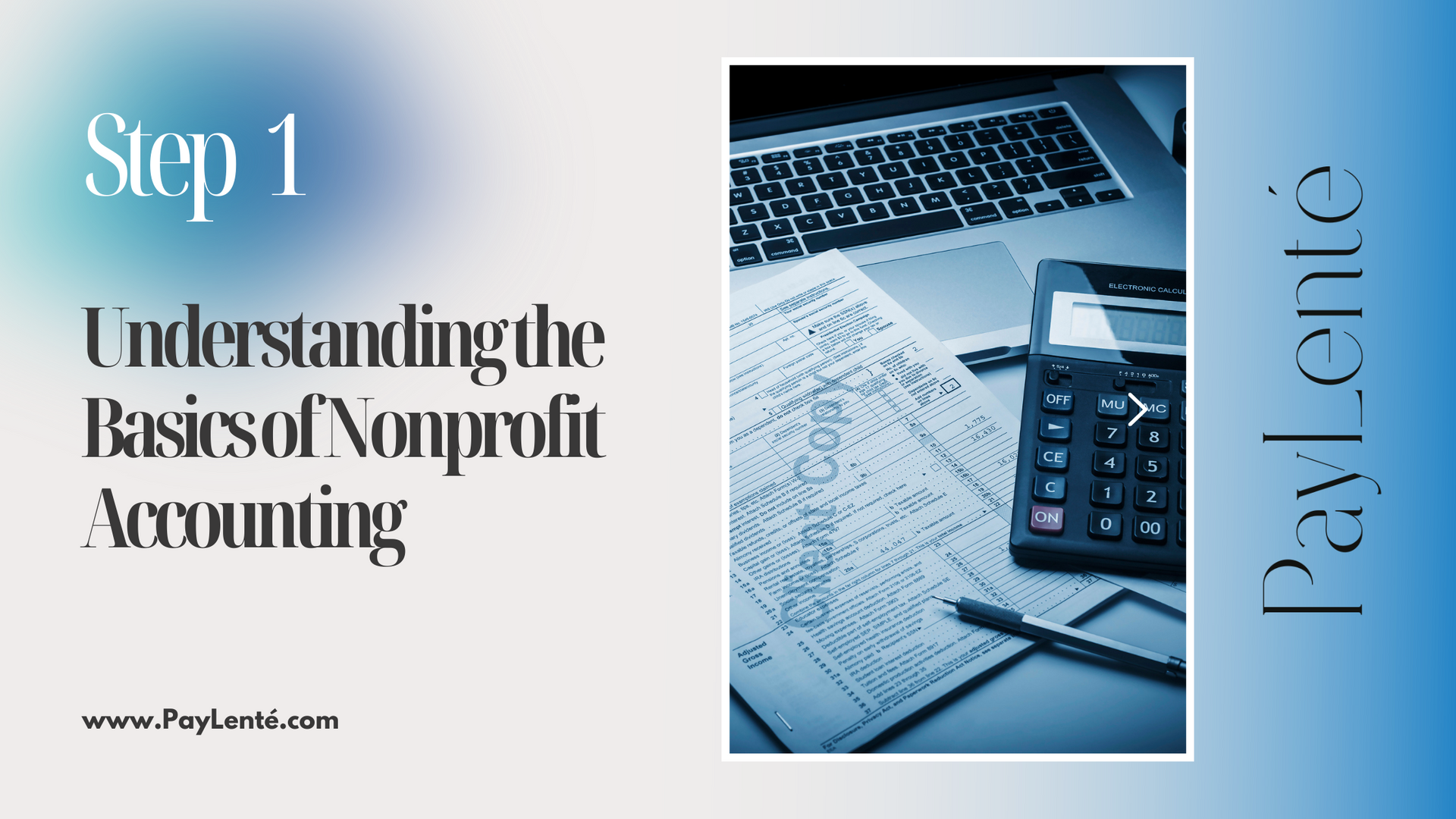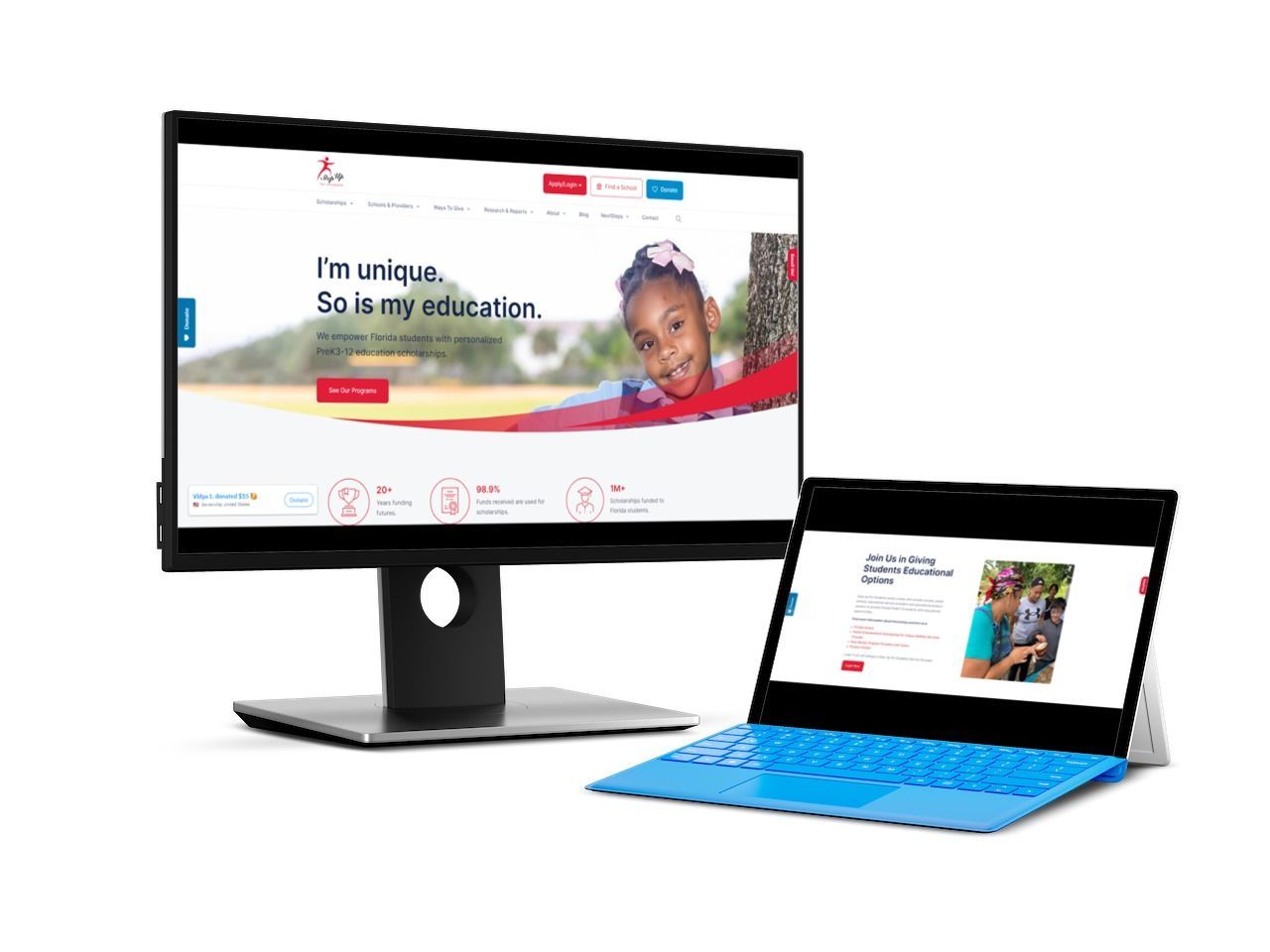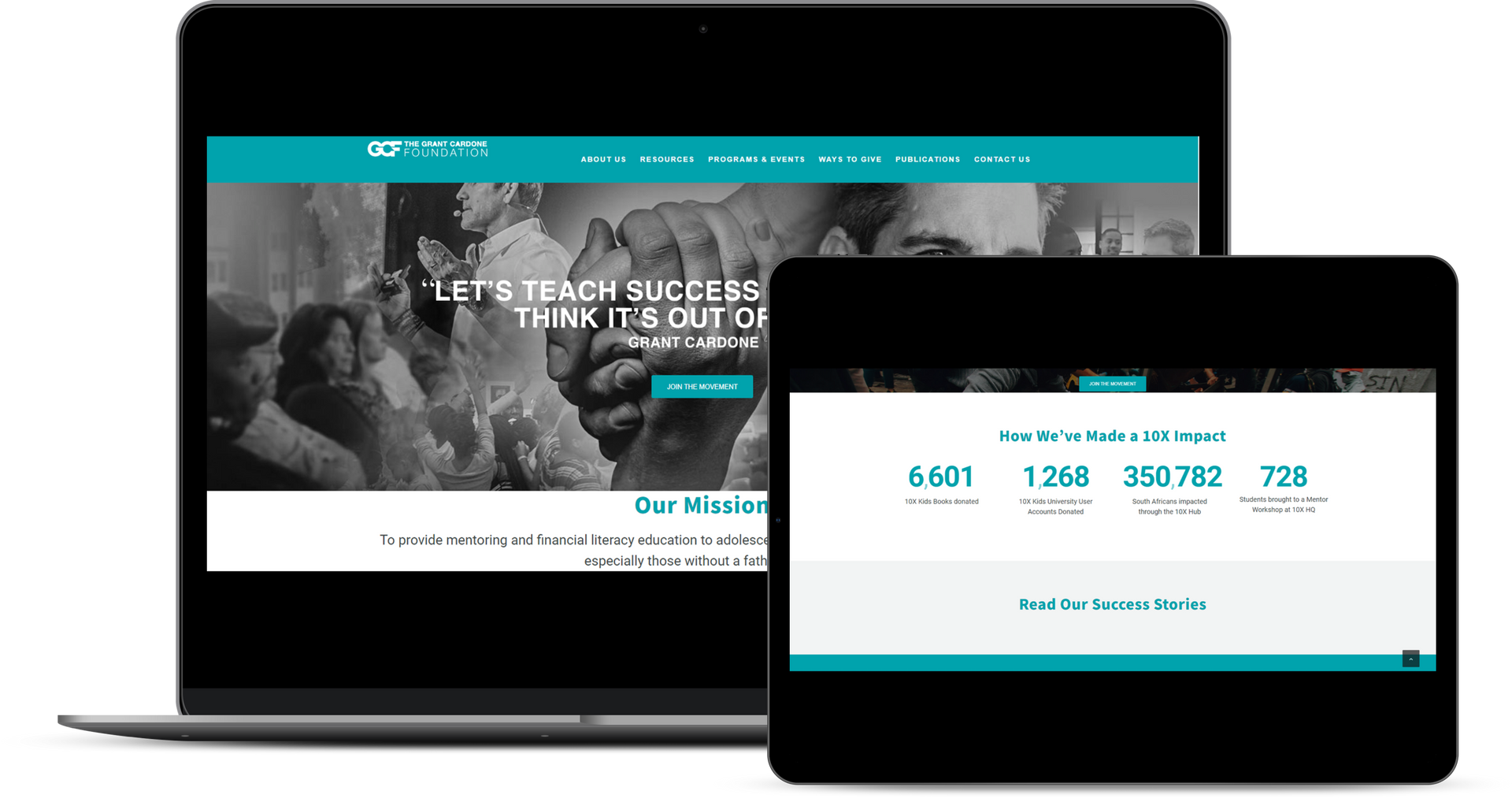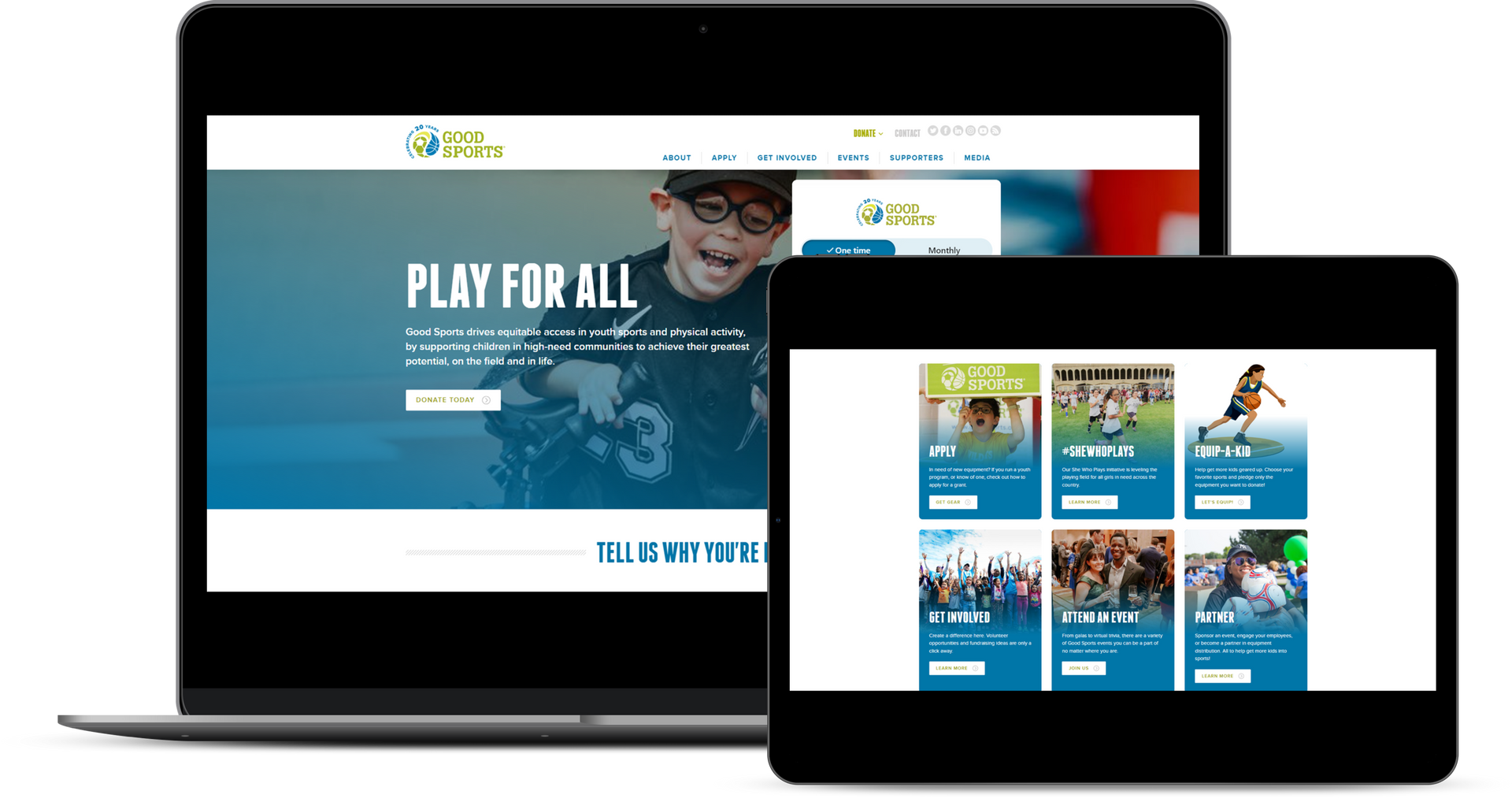How to Set up an Accounting System for a Nonprofit Organization?
As a distinguished 501(c) nonprofit ourselves, we understand the unique challenges and aspirations that drive your mission. Our experience in coaching nonprofits globally has exposed us to the diverse landscapes where nonprofits thrive. From laying the foundation of a new nonprofit to harnessing the power of cutting-edge marketing trends, we've journeyed alongside passionate individuals determined to make a difference.
Now, we turn our focus to an indispensable pillar of nonprofit management – accounting. By the time you've navigated through this guide, you'll be equipped with the knowledge and tools to establish an accounting system that not only keeps your financial records in impeccable order but also empowers you to amplify your impact through strategic decision-making and enhanced donor relations.
Join us as we demystify the process of creating a robust accounting system tailored to the distinctive needs of nonprofit organizations. Whether you're just starting your nonprofit venture or seeking to refine your financial infrastructure, this blog post is your compass on the voyage to financial excellence.
Step 1. Understanding the Basics of Nonprofit Accounting
Differentiating Nonprofit Accounting from For-Profit Accounting
Nonprofit accounting and for-profit accounting share some similarities, such as the basic principles of recording financial transactions, preparing financial statements, and managing budgets. However, there are distinct differences that nonprofit organizations must consider.Purpose of Financial Activities: The primary goal of for-profit businesses is to generate profit for their owners or shareholders. In contrast, a nonprofit organization operates with a mission to serve the public or a specific cause. This fundamental difference influences how financial transactions are recorded and reported.
Stakeholders and Reporting: Nonprofits are accountable to a diverse set of stakeholders, including donors, grantors, beneficiaries, and the general public. As a result, nonprofit financial statements need to communicate how resources are used to fulfill the organization's mission rather than focusing solely on profitability.
Key Principles and Regulations Governing Nonprofit Accounting
Nonprofit accounting is governed by a set of principles and regulations that ensure proper financial stewardship and transparency. Here are some key considerations:IRS Guidelines for 501(c) Organizations: Nonprofits seeking tax-exempt status under section 501(c) of the Internal Revenue Code must adhere to specific IRS guidelines. These guidelines for nonprofit status outline the requirements for financial record-keeping, reporting, and the allocation of expenses to ensure that the organization's activities align with its nonprofit purpose.
Accrual Accounting: Nonprofits often use accrual accounting, which records transactions when they occur rather than when cash changes hands. This approach provides a more accurate representation of an organization's financial health and performance.
Fund Accounting: Nonprofits commonly use fund accounting to track resources dedicated to specific purposes, programs, or projects. This allows for better accountability and transparency in demonstrating how funds are used to achieve the organization's mission.
Importance of Transparency and Accountability in Nonprofit Financial Management
Transparency and accountability are at the core of nonprofit financial management. Here's why they are essential: Donor Confidence: Donors and supporters want to know that their contributions are being used effectively to make a positive impact. Transparent financial reporting builds trust and confidence in your organization, encouraging ongoing support.Grant Applications and Compliance: Many nonprofits rely on grants to fund their initiatives. Clear financial records and accountability measures are crucial for successful grant applications and compliance with grant terms. Board Oversight: Nonprofit boards have a fiduciary duty to oversee the organization's financial activities. Transparent accounting practices provide the financial accounting standards board with accurate insights to make informed decisions.
Step 2. Choosing the Right Accounting Method for Your Nonprofit Organization
This decision holds significant implications for how you record and report your financial transactions, which, in turn, affects how your organization is perceived by stakeholders, donors, and regulatory authorities.
Accrual Accounting vs. Cash Accounting: Deciding What's Best for Your Nonprofit
Two primary accounting methods exist: accrual accounting and cash accounting. Each method has its own set of advantages and considerations, and the choice you make will largely depend on the size, complexity, and nature of your nonprofit's activities.Accrual Accounting:
This method records financial transactions as they occur, regardless of when cash is actually received or paid. In other words, income is recognized when it's earned, and functional expenses are recorded when they are incurred.Accrual accounting provides a more accurate representation of your nonprofit's financial position and performance over time, offering a comprehensive view of your organization's activities. It's particularly suited for nonprofits that engage in significant fundraising, grant management, or multi-year projects.
Pros:
- Reflects a more realistic financial picture.
- Better suited for tracking long-term commitments and obligations.
- Conforms to Generally Accepted Accounting Principles (GAAP).
- Requires meticulous record-keeping.
- Can be more complex and time-consuming.
- May not align well with cash flows management.
Cash Accounting:
This method, on the other hand, records transactions only when cash changes hands. It's a simpler approach that provides a clearer view of your nonprofit's immediate cash position.Cash accounting is often favored by smaller nonprofits with straightforward financial operations and minimal transaction complexity.
Pros:
- Simple and straightforward.
- Easier to manage and understand, especially for smaller nonprofits.
- Provides a clear picture of available cash.
- May not accurately represent long-term financial health.
- Could lead to potential distortions in financial reporting.
- May not be suitable for nonprofits with larger budgets or complex operations.
Factors to Consider in Your Decision
When deciding between accrual and cash accounting, consider the following factors:- Size and Complexity: Larger nonprofits with multiple funding sources, grants, and ongoing projects may benefit from accrual accounting's comprehensive tracking. Smaller nonprofits with straightforward financial transactions might find cash accounting more manageable.
- Donor and Stakeholder Expectations: Accrual accounting aligns better with transparency and may inspire confidence in stakeholders and donors. However, some donors might prefer to see immediate cash-based financials.
- Reporting Requirements: Check whether your nonprofit is required to use a specific accounting method based on local regulations, grant agreements, or donor expectations.
- Long-Term Planning: Accrual accounting can provide insights into long-term financial commitments, helping your nonprofit plan for future sustainability.
- Cash Flow Management: Cash accounting provides a clearer view of your immediate cash availability, which can be crucial for day-to-day operations.
Step 3. Setting Up Financial Software for Your Nonprofit Organization
In this section, we will delve into the crucial aspects of selecting and configuring accounting software tailored to nonprofit needs, guiding you through the step-by-step process, and exploring how integration with other tools can enhance your financial management.
Popular Accounting Software Options Suitable for Nonprofits
When it comes to choosing the right accounting software for your nonprofit, it's important to consider options that align with your organization's unique requirements.Here are a few popular accounting software choices well-suited for nonprofits:
- QuickBooks Nonprofit: QuickBooks offers a specialized version for nonprofits, providing features tailored to your sector. It helps manage donations, grants, fundraising expenses, and offers customizable reporting.
- Xero Nonprofit: Xero's cloud-based platform is known for its user-friendly interface and comprehensive financial tools. It allows easy tracking of donations, budgeting, and expense management.
- Wave: Wave is a free accounting software option that's suitable for small nonprofits with basic accounting needs. It offers invoicing, expense tracking, and financial reporting.
- NetSuite: If your nonprofit has more complex financial needs, NetSuite offers a comprehensive solution that integrates accounting, fundraising, and donor management.
- Sage Intacct: This software is ideal for nonprofits looking for advanced financial management capabilities, including fund accounting, grant management, and compliance reporting.
Setting Up the Chosen Software
Now, let's walk through the process of setting up your chosen accounting software for your nonprofit organization:- Gather Your Financial Information: Collect all relevant financial data, including past transactions, donations, grants, and expenses.
- Create Your Chart of Accounts: Set up a chart of accounts that aligns with nonprofit accounting standards. Create categories for donations, programs, administration, and other relevant expenses.
- Configure Users and Permissions: Define user roles and permissions within the software. Assign appropriate access levels to ensure data security.
- Set Up Bank and Payment Integrations: Link your nonprofit's bank accounts and payment processors to streamline transactions and reduce manual data entry.
- Enter Opening Balances: Input initial account balances to ensure accurate financial reporting from the start.
- Record Donations and Grants: Input existing donations, grants, and pledges into the system. Categorize them appropriately for accurate reporting.
- Enter Expenses: Record your nonprofit's expenses, categorizing them based on your chart of accounts.
- Customize Reports: Customize financial reports to provide insights into your nonprofit's financial health and performance.
- Train Your Team: Provide training to your team members to ensure they understand how to use the software effectively.
Integrating Accounting Software with Other Tools
To optimize your nonprofit's financial management, consider integrating your accounting software with other tools:- Donor Management System: Connect your accounting software with a donor management system to track and analyze donor contributions, interactions, and engagement.
- Fundraising Platforms: Integration with fundraising platforms allows seamless tracking of funds raised, ensuring accurate financial records.
- Expense Management Tools: Linking expense management tools enables real-time expense tracking and reporting, streamlining reimbursement processes.
- Payroll Software: Integration with payroll software simplifies payroll processing, tax calculations, and compliance reporting.
- Bank Feeds: Enable automatic bank feeds to import transactions, minimizing manual data entry and reducing errors.
Step 4. Internal Controls and Fraud Prevention
Implementing Internal Control Procedures
Segregation of Duties: Divide financial responsibilities among different individuals or teams to prevent any one person from having too much control over financial transactions. For instance, separate the roles of authorizing transactions, recording them, and reconciling accounts.Approval Processes: Implement a clear approval hierarchy for financial transactions. Require multiple levels of approval for significant expenditures or budget adjustments.
Documentation and Record-Keeping: Maintain thorough and organized documentation for all financial transactions. This includes invoices, receipts, contracts, and any other relevant paperwork. This practice helps in tracking and verifying transactions, ensuring accuracy.
Physical Controls: Safeguard physical assets, such as checks and valuable documents, with secure storage and limited access. This prevents unauthorized handling or misuse.
Detecting and Preventing Fraud
Employee Training: Educate your staff about fraud risks and prevention. Encourage them to report any suspicious activity or concerns. A vigilant team can be your first line of defense against fraud.Whistleblower Policy: Establish a confidential and anonymous reporting mechanism, such as a whistleblower hotline, where employees, volunteers, and stakeholders can report suspected fraud without fear of retaliation.
Regular Reconciliation: Reconcile your financial statements regularly to identify any discrepancies or irregularities. Promptly investigate and address any discrepancies.
Use of Technology: Leverage financial software and tools that provide fraud detection features, such as alerts for unusual transactions or patterns.
Conducting Regular Audits and Reviews
External Audits: Engage a reputable external auditing firm to conduct periodic audits of your financial records. External audits provide an unbiased assessment of your financial practices and enhance credibility.Internal Audits: Establish an internal audit team or engage external consultants to perform internal audits. These audits can identify process inefficiencies, control weaknesses, and potential areas of fraud.
Financial Reviews: Conduct regular financial reviews to assess the accuracy and completeness of your financial statements. This ongoing scrutiny ensures timely detection of errors or irregularities.
Step 5. Reporting and Compliance
Generating Essential Financial Reports
In the world of nonprofit organizations, generating essential financial reports is a crucial aspect of maintaining transparency, accountability, and effective decision-making. Two fundamental reports that every nonprofit should produce are the Statement of Activities and the Balance Sheet.Statement of Activities: Also known as the income statement or profit and loss statement, this report outlines the organization's revenue, expenses, and net income or loss over a specific period. It provides a clear picture of the financial health and operational performance of the nonprofit. By categorizing revenues and expenses, this statement of financial position helps identify areas of strength and areas that need attention.
Balance Sheet: The balance sheet presents the organization's financial position at a particular moment in time. It lists the organization's assets (what it owns), liabilities (what it owes), and net assets (the difference between assets and liabilities). The balance sheet offers insight into the organization's liquidity, financial stability, and its ability to meet its obligations.
Meeting Regulatory Requirements and Preparing for Annual Audits
Compliance with regulatory standards is crucial for nonprofit organizations to maintain their tax-exempt status and uphold public trust. To ensure compliance and prepare for annual audits:Keep Detailed Records: Maintain accurate and comprehensive financial records. Proper documentation is key to demonstrating your organization's financial activities and justifying the use of funds.
Stay Informed: Stay up-to-date with the latest accounting and tax regulations for nonprofits. These regulations might vary depending on your location and the nature of your nonprofit's activities.
Engage Professional Help: Consider seeking the assistance of an experienced nonprofit accountant or financial advisor who specializes in nonprofit financial management. They can guide you through the complexities of compliance and ensure you're following best practices.
Internal Audit: Conduct regular internal audits to identify and rectify any discrepancies or weaknesses in your financial systems. This proactive approach can help you address issues before they become larger problems during an external audit.
Using Financial Reports to Communicate with Stakeholders
Financial reports are not only tools for compliance; they also serve as valuable communication tools to engage with stakeholders and donors.Transparency and Trust: Sharing well-prepared financial reports demonstrates your organization's commitment to transparency. It reassures stakeholders and donors that their contributions are being used responsibly and effectively.
Impact Storytelling: Use financial reports to tell the story of your nonprofit's impact. Showcase how funds are being allocated to various programs, projects, and initiatives, and highlight the positive changes your organization is making in the community.
Donor Confidence: Regularly sharing financial reports can enhance donor confidence and encourage continued support. Donors appreciate seeing the tangible outcomes of their contributions and knowing their support is making a difference.
Educational Outreach: Leverage financial reports to educate your stakeholders about your nonprofit's financial health and the challenges you face. This helps foster a deeper understanding of your organization's mission and goals.
By effectively generating, leveraging, and sharing financial reports, nonprofit organizations can demonstrate their commitment to accountability, compliance, and making a meaningful impact in the world.
Step 6. Donor Management and Contribution Tracking
Tracking and Acknowledging Donations in Compliance with IRS Guidelines
Accurate Recording: Maintaining meticulous records of all donations is essential. Create a standardized process for recording donations promptly, ensuring details like donor information, amount, date, and purpose are accurately captured.Acknowledgement Letters: The IRS requires nonprofits to send acknowledgment letters for donations above $250. However, it's a good practice to send acknowledgments for all donations. Automate this process using your financial software to ensure consistency and compliance.
Non-Cash Contributions: Don't forget to record and acknowledge non-cash contributions such as goods or services. These are equally important and may have tax implications for both donors and the organization.
IRS Guidelines: Familiarize yourself with IRS guidelines on donation substantiation to ensure your acknowledgment letters meet the required criteria. This helps protect both your nonprofit's tax-exempt status and your donors' ability to claim deductions.
Utilizing Accounting Systems to Strengthen Donor Relationships
Centralized Donor Profiles: Leverage your financial software to create comprehensive donor profiles that include contact information, giving history, preferences, and engagement levels. This enables personalized communication and tailored engagement strategies.Segmentation and Targeting: Utilize the data in your accounting system to segment donors based on their giving patterns, interests, and demographics. This allows you to tailor fundraising appeals and communication, resulting in higher engagement and increased contributions.
Automated Communication: Set up automated email responses and personalized thank-you messages triggered by specific donor actions. Acknowledging contributions promptly and showing appreciation strengthens donor relationships and encourages continued support.
Campaign Tracking: Link specific donations to fundraising campaigns or initiatives using your accounting system. This not only helps you measure the success of different fundraising efforts but also provides donors with a clear understanding of where their contributions are making a difference.
Highlighting the Impact of Donations through Transparent Financial Reporting
Regular Financial Reports: Your accounting system should generate regular financial reports that showcase the allocation of funds, expenses, and the overall financial health of your nonprofit. Share these reports with donors to demonstrate responsible financial management.Impact Reports: Go beyond numbers and create impact reports that illustrate how donor contributions have directly benefited your mission. Incorporate success stories, testimonials, and tangible outcomes to show donors the real-world effects of their support.
Interactive Dashboards: Consider using interactive dashboards within your financial software to allow donors to explore financial data visually. This level of transparency fosters trust and reinforces your commitment to using funds effectively.
Annual Reports: Develop comprehensive annual reports that summarize your nonprofit's accomplishments, financial performance, and future goals. Include narratives that showcase the impact of donations alongside financial metrics.
Navigating Nonprofit Finances: The Bottom Line
As we've navigated through the intricacies of this vital process, it's evident that a well-structured accounting system empowers nonprofits to channel their resources effectively, maintain transparency, and attract invaluable support from donors and stakeholders. By delving into the insights shared in this blog post, you've taken the first step towards financial stewardship. Ready to unlock the full potential of your nonprofit journey? Join our Nonprofit Launchpad Course today and equip yourself with the essential skills to not only set up a stellar accounting system but also to steer your nonprofit towards lasting success. Your mission deserves nothing less.
Featured Nonprofits
donate today
Invest Directly to this Nonprofit
Thank you for taking the first step towards transformative giving. Your decision to donate to PayLenté's How to Set up an Accounting System for a Nonprofit Organization?. We appreciate your generosity and look forward to sharing more about how your contribution will drive growth, support nonprofits, and provide you with meaningful tax benefits. Your impact starts now, and we'll be in touch shortly to provide you with the information you need to embark on this remarkable journey.



















